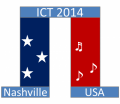Google Search
A5: Nanoscale and low dimensional effects
Higher manganese silicides (HMS), MnSi1.73, are attractive thermoelectric materials with a reported maximum ZT ~0.5 at 800 K in undoped samples, without expensive or toxic elements. The syntheses of nanostructured silicides generally require very high temperatures (i.e. >700 °C) to overcome the slow reaction kinetics of Si. Furthermore, most approaches to synthesize nanostructured silicides (i.e. vapor phase conversion processes) are not scalable, producing less than 50 mg per batch. Here, we report a new method to scalably generate nanostructured silicides directly from nanosilica and nano-metal oxide precursors at low temperatures. The reduction of nanosilica is accomplished through the addition of magnesium as a reducing agent, which is mixed with suitable metal oxides and solvated within a molten (liquid) salt electrolyte. The generalized reaction proceeds xMnO2 + ySiO2 + zMg → MnxSiy + zMgO. The use of molten salt electrolytes (i.e., a LiCl:KCl eutectic with a melting point of 350 °C) considerably reduces the kinetic barriers to silicide formation by effectively solvating the oxide reactants, allowing the reactions to proceed at temperatures as low as 500-700 °C. By using inexpensive, nontoxic, and scalably synthesized nanostructured metal oxides, such as MnO2 nanowires and SiO2 nanoparticles, we can generate nanocrystals of thermoelectric MnSi1.73, with a high yield of ~0.8-1 g per batch. Preliminary thermoelectric properties measurements of bulk materials synthesized from the nanostructured HMS will be discussed. Moreover, we show that this approach is extremely facile and may be applied to a wide variety of other technologically interesting nanosilicides and combinations thereof.
